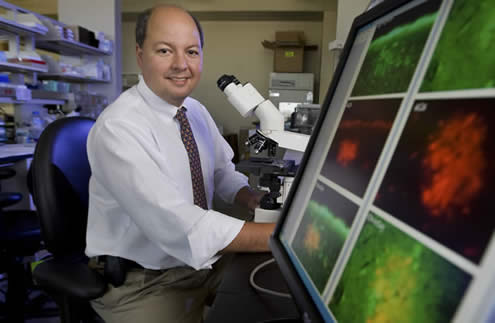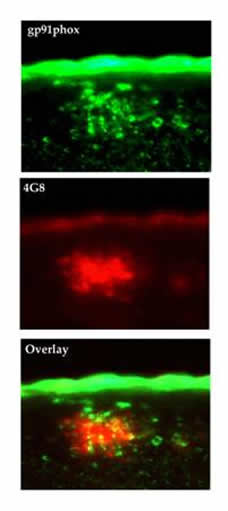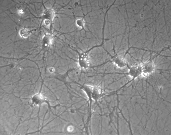|
About Us
Dr. Jeffrey N. Keller, Ph.D.
Director
Institute of Dementia Research & Prevention
Professor
Associate Executive Director for Basic Research
Hibernia National Bank/Edward G. Schlieder Chair
Pennington Biomedical Research Center

Photo courtesy of Tim Mueller
Message from the Director:
Today, when someone in Louisiana realizes that they have a significant change in their cognitive status that cannot be explained as normal aging, or become confronted with the reality that one of their loved ones has dementia, they currently have a limited set of options. For example, individuals in Louisiana are limited in the number of clinical trials they have access to locally, and are a limited in their access to the latest research on dementia prevention and dementia management. In order to change this we have to develop a community based approach to dementia. In this community based approach citizens in the community become advocates for the Institute, and work as a team with the researchers, clinicians, and care providers towards the common goal of preventing dementia.
Louisiana has a number of talented scientists, and many of these individuals are working on research projects which have the potential to be therapeutics which prevent dementia and promote healthy brain aging. What does not currently exist in Louisiana is the infrastructure to promote world class basic and clinical research on dementia, and access to infrastructure which allows investigators new to dementia research to test their potential therapeutics for dementia and brain pathology. Seeding these initial studies and promoting the development of therapeutic compounds for dementia prevention, and promoting the development of strong independent lines of dementia research in labs throughout Louisiana, are key to developing a meaningful community of dementia research in Louisiana. An added benefit of these efforts is that they will attract clinical trials, promote biotech on dementia therapeutics, and increase access to the latest in dementia therapeutics to the citizens of Louisiana.
The Institute will work to unify community advocates, researchers, clinicians, and care givers on the topic of dementia prevention. These efforts will improve the quality of life for all individuals in Louisiana by providing its citizens and dementia researchers an environment to succeed in the battle to prevent dementia, and provide an increased number of options for the citizens of Louisiana to cope with the devastating effects of dementia.
I sincerely hope that you will help us in our fight against dementia. In order to be successful the Institute will rely on not any one person, but upon the multiple people within the community who are willing and able to help. Please feel free to contact us at the Institute to learn more about the latest news at the Institute and to find out more details on all the different ways you can help.
Mission of the Institute:
The mission of the Institute for Dementia Research and Prevention (IDRP) is to improve the quality of life for individuals in Louisiana by generating world class research programs focused on dementia prevention and providing vital educational opportunities for individuals affected by dementia.
Objectives of the Institute:
The goal of the Institute is to fulfill the mission through 3 principle approaches. These efforts include the establishment of a longitudinal study of aging and dementia, developing a therapeutic screening program, and conducting conferences and outreach on the latest in dementia prevention.
The Institute will conduct a longitudinal study that will consist of annual neuropsychological exams in individuals aged 60 and over. These studies will allow us to understand how age-related dementia occurs, and develop better tools to detect and quantify dementia, and thereby develop interventions to prevent dementia from occurring. An added benefit of these efforts is that they will attract clinical trials and access to the latest in dementia therapeutics to the citizens of Louisiana. The second goal of the Institute is to provide a research platform and infrastructure for researchers to identify therapeutics for the prevention of dementia, and additionally build a base of talented and productive scientist in Louisiana who are dedicated to the eradication of dementia in the elderly. These efforts will include cutting edge models for identifying therapeutic compounds in the treatment of dementia, and will enlist the expertise across a broad range of scientific disciplines. Lastly, the Institute will conduct conferences which promote education on the latest in dementia and dementia prevention to the citizens and caregivers in Louisiana. These efforts will include an annual conference at the PBRC as well as numerous community events throughout Louisiana.
How is research on dementia conducted?
In order to determine why dementia occurs, and to develop meaningful therapeutic options (pharmacological, dietary, lifestyle) which prevent dementia in the elderly, studies must be conducted at the level of both basic and clinical science. For example, identifying what changes occur in humans helps us understand how the brain changes during the progression of dementia, but these clinical studies often cannot provide insight as to the mechanisms responsible for altering brain function and brain pathology.
The researchers at the Institute will focus multiple scientific disciplines at both the basic and clinical research level to find ways to prevent dementia in the elderly. Clinical efforts will initially focus on the longitudinal study, while basic science efforts will focus on the therapeutic screening platform work. In order to help demonstrate how research can provide insight to dementia, a few examples from investigators at the Institute are provided below. We hope you will contact us to find out more on the latest in dementia research at the Institute.
Mice that have been engineered to express genes that promote Alzheimer’s disease are able to recapitulate some features of pathology seen in Alzheimer’s disease brain (see Figure 1).
Figure 1

One model used by researchers in the Institute includes a mouse model that develops increased levels of beta amyloid plaques. Some images below show the time dependent increase in plaques that occur in the brains of these mice (Figure 1). These mice can then be used to identify therapeutic interventions which prevent the development of this pathology in Alzheimer’s disease.
Figure 2

Mouse models of dementia can also be used to understand how pathology may promote important neurochemical alterations in the brain. This image from a mouse model of dementia shows deposits of beta amyloid in the brain (4G8; plaques) in red, and that these deposits have increased levels of oxidative stress markers co-localizing with them (gp91phox; green), suggesting that there is a relationship between increased plaques and increased oxidative stress (Figure 2). Findings such as these help us understand how dementia and pathology occur and how to develop interventions to prevent them from occurring.
Investigators in the Institute use primary neurons from rodents, which closely recapitulate some key aspects of human neurons in the brain. These cultures can be used to study how things like beta amyloid or other pathogenic factors cause neurons to become “sick” in the different forms of dementia. In these images you can see that beta amyloid (Ab) causes neurons to loose their connections and die, and that if neurons are treated with a neuroprotective compound (sRAGE) they are able to stay alive and in contact with one another (Figure 3). Findings such as these are useful in developing potential therapeutics which help to keep neurons alive and functioning well in the brain.
Investigators in the Institute use primary neurons from rodents, which closely recapitulate some key aspects of human neurons in the brain. These cultures can be used to study how things like beta amyloid or other pathogenic factors cause neurons to become “sick” in the different forms of dementia. In these images you can see that beta amyloid (A) causes neurons to loose their connections and die, and that if neurons are treated with a neuroprotective compound (sRAGE) they are able to stay alive and in contact with one another.
Figure 3
  


|